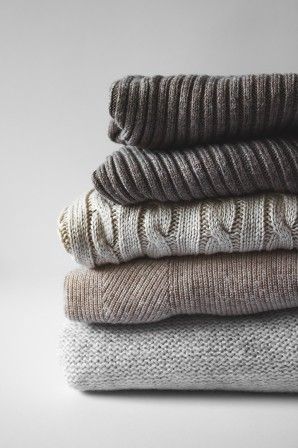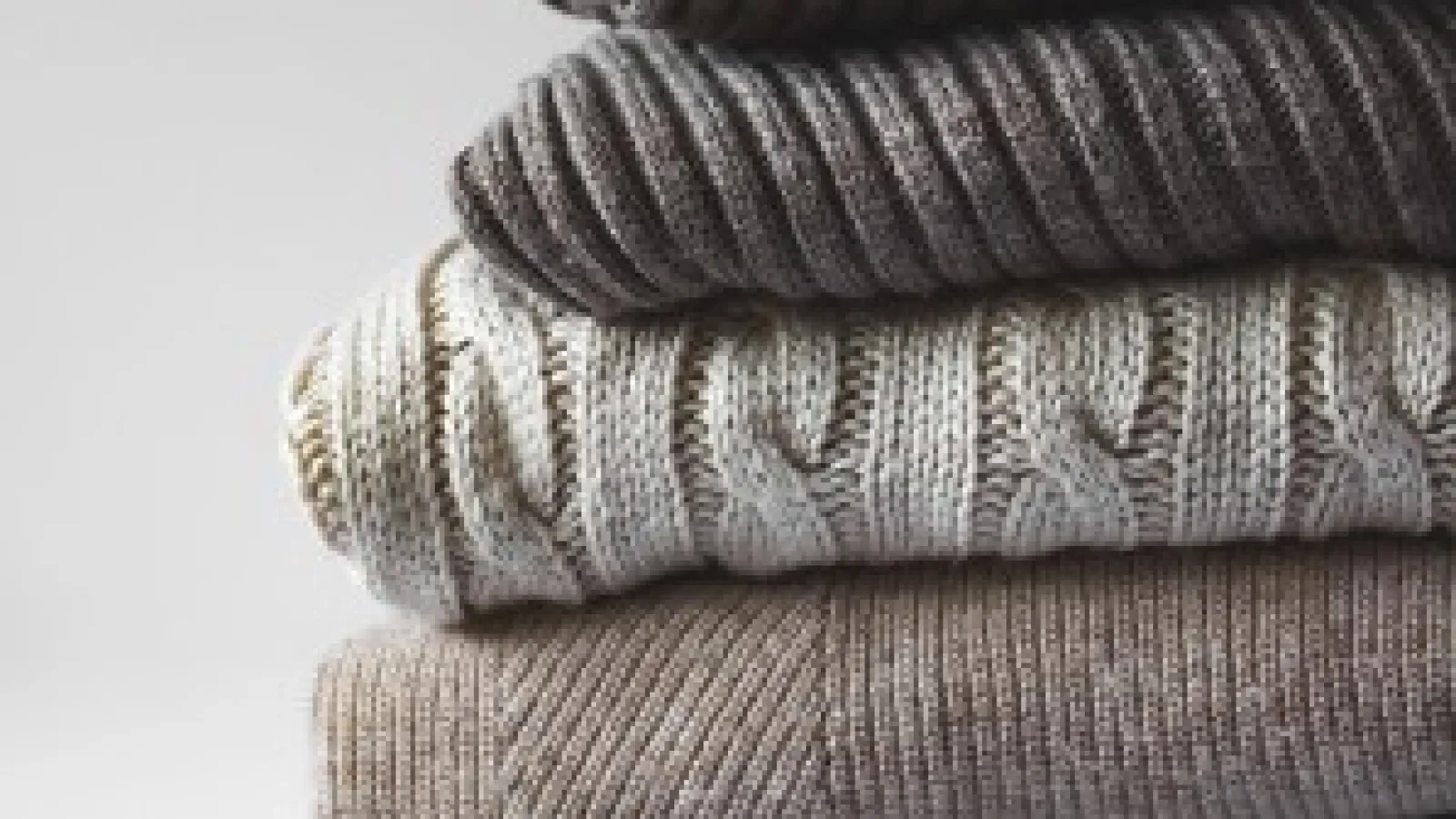
Sweaters come in many shapes, sizes, and fiber content. Each type of fiber can present different challenges when in the cleaning process. Here are some tips to help you successfully clean sweaters at home without causing damage. As experts in this field, we're here to help and will happily take this chore off your hands.
Sweaters and Their Many Fibers
Sweaters come in many shapes, sizes, and fiber content. Each type of fiber can present different challenges when in the cleaning process. Here are some tips to help you successfully clean sweaters at home without causing damage. As experts in this field, we're here to help and will happily take this chore off your hands.
ACRYLIC
Acrylic knit sweaters are often difficult to distinguish from wool or other fiber types. For this reason, paying attention to the care label and content is especially important. If the label suggests precautions, or if you notice the fiber "acrylic" is noted on the fiber content label, special handling will be required.
Acrylic is a thermoplastic fiber. This means it can be affected by heat and that the fibers may be stretched as a result of high temperatures, including temperatures used in ironing and drying. For this reason, avoid high temperatures in drying or steam pressing.
Lay flat to dry or, if recommended by the care label, tumble dry at low temperatures.
ANGORA
Angora rabbit hair is blended with wool and synthetic fibers to create a very soft fabric. Shrinkage is the biggest problem with angora. Even machine washing on a delicate cycle causes more shrinkage than hand washing.
If machine washing is recommended on the care label, use mild detergent (alkaline detergents can damage the angora fibers). However, usually hand washing is recommended and will be less damaging. Lay flat to dry.
CAMEL'S HAIR/CASHMERE/MOHAIR
Camel's hair, cashmere, and mohair are soft, touchable wools. Camel's hair is a fabric made from the hair of a camel, sometimes blended with wool. Fibers from the camel family include camel's hair, alpaca, guanaco, llama, and vicuna.
Guanaco, llama, and vicuna hairs are very soft, and camel's hair is soft and very durable. Cashmere and mohair both come from goats, and are often blended with wool or synthetic fibers. Mohair is the stronger of the two fibers.
Due to their construction, most sweaters made of these fibers are "dryclean only." Fabrics made of these fibers generally have a nap or brushed finish. Problems include matting and pilling, especially in areas of wear such as the collar, elbows or underarms.
Shrinkage is also common. This type of damage may be aggravated by the agitation of care procedures.
CHENILLE
Chenille yarns resemble a pipe cleaner or caterpillar and have a pile-like surface. In fact, chenille is French for caterpillar.
Chenille yarns are used in both woven and knit constructions and are popular for use in both apparel and home furnishings.
On loosely woven or knitted sweaters and other apparel, the yarns tend to snag or pull out easily. Normal rubbing and friction on the fabric will initiate the condition. The necessary agitation of cleaning further aggravates the damage.
For washable chenille articles, hand washing may be safer than machine washing, even if the article is labeled as such. Machine washing, even on a gentle cycle, can cause excessive fabric damage. After washing, lay the sweater flat to dry.
WOOL
Wool is a protein fiber spun from sheep's hair and is popular because it is durable, comfortable, and an excellent insulator.
Wool requires special handling in both dry cleaning and laundering.
If the care label is not followed, shrinkage may result.
If the care label suggests hand washing, use cool water and a mild detergent. Alkaline detergents and chlorine bleach should be avoided. Soak up to five minutes and rinse thoroughly. Squeeze out excess water without wringing or twisting.
Lay flat to dry, away from sunlight and direct heat.
If the label suggests machine washing, use the gentle cycle.
As for stains, wools and other sweaters with a "dryclean only" label should be taken to your drycleaner.
Courtesy of DLI
